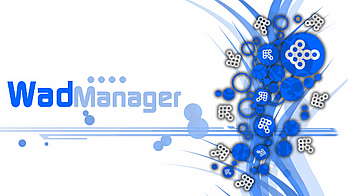
:no_upscale()/cdn.vox-cdn.com/uploads/chorus_image/image/67391442/mario64_DS.0.jpg)
Mario Kart 64 is the first game in the series to use 3D computer graphics. Racing on D.K.'s Jungle Parkway, the first course of the Special Cup. The game was commercially successful and was generally praised for the fun and high replay value of its multiplayer modes, though some critics regarded it as a disappointment compared to Super Mario Kart. However, the characters and items remain 2D pre-rendered sprites. The move to three-dimensional graphics allowed for track features not possible with the original game's Mode 7 graphics, such as changes in elevation, bridges, walls, and pits. Players take control of characters from the Mario franchise, who race around a variety of tracks with items that can either harm opponents or aid the user. It was later released as a Virtual Console game for the Wii, Wii U, and on the Nintendo Switch Online + Expansion Pack service in 2007, 2016, and 2021, respectively.Ĭhanges from the original include the move to polygon-based true 3D computer graphics for track design, and the inclusion of four-player support. The game was first released in Japan on 14 December 1996, in North America on 10 February 1997 and in the United Kingdom on 24 June 1997. The game is the second entry in the Mario Kart series and is the successor to Super Mario Kart for the Super Nintendo Entertainment System. rpcs3 seems more performant, taking into account how much more powerful ps3 seems to be on paper.Mario Kart 64 is a 1996 kart racing video game developed and published by Nintendo for the Nintendo 64 (N64). That just doesn't mesh with pc's and you can see that in performance of the emulator, with certain games. custom cpu instructions, some of which are 128bit. two oddball specialized vector computation units.

ability to rapidly access video memory from the cpu with nearly no performance penalty. GPU that does things even todays video cards cannot emulate. cpu that calculates floats in a nonstandard way.

small cache, tiny video ram, geometry constructed on the fly from main ram to video ram all the time, constant texture uploads, absurdly huge pipeline between various components, insanely tight timings. code is adapted to handle various resolutions and storage, it calls firmware functions for a lot of things (saving the game, drawing things, loading data, networking, etc).Īlso ps2 architecture is constructed around a design that at the time was pc put on its head (it probably still is). On ps3 games run under hypervisor and do most hardware interaction via system API. rpcs3 runs a lot of ps3 games in 4K on reasonable hardware setups (almost no performance loss compared to regular resolution, when using Vulkan API), because games are written in generic enough way to upscale them easily.Īlso, i think ps3 was easier to code for than ps2 was. but it seems way easier to emulate than ps2, because ps3 code is actually less bare metal. It was tricky to code for, that is certain.


 0 kommentar(er)
0 kommentar(er)
